Soundchaser by Yuri Suzuki
Product designer Yuri Suzuki presented a collection of projects investigating physical representations of sound at the Royal College of Art Show Two in London earlier this month.
Soundchaser, a collaboration with Yaroslav Tenzer of Imperial College, contains a stylus and speaker that follows a track made from laser-cut pieces of vinyl records.
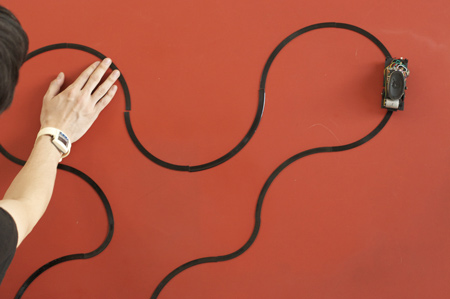
"Users connect the chipped pieces of records together to make new tracks," explains Suzuki. "The records are bought at jumble sales or used record shops; this record player revives forgotten, old records"
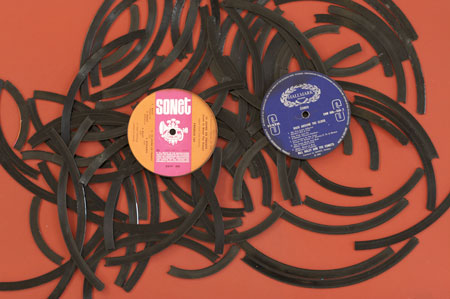
Prepared turntable (below) "focuses on actively composing and playing music." A specially made loop-groove record is printed with elements of music such as bass, drum beat and melody.
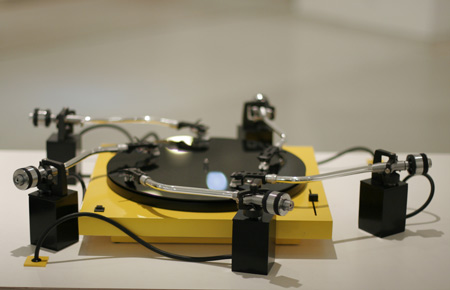
The user mixes their own music from the record by controlling the five stylus arms. "This is an analogue answer for the digitalised DJ," says Suzuki.
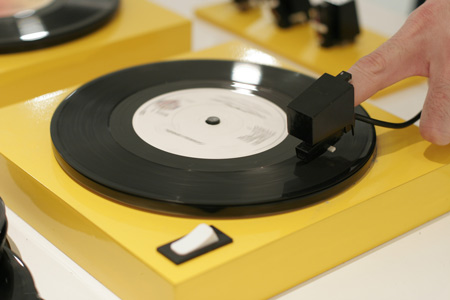
The Finger Player (above) is a stylus that fits on the user's finger, so they can physically feel sounds being produced, while Sound Jewellery (below) has sound grooves etched into a necklace, bracelet and brooch.
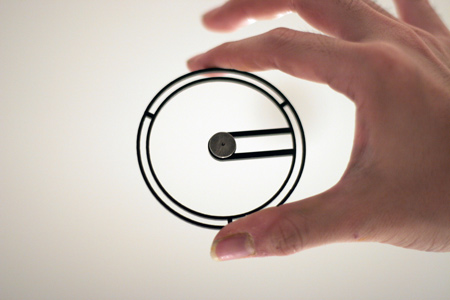
"The sounds can include precious memories such as the laughter of someone with their grandma, a telephone conversation with a girlfriend, or sounds recorded during holidays and so on," says Suzuki, who developed the jewellery in collaboration with Linda Brothwell and Caren Hartley of the Royal College of Art's Goldsmithing, Silversmithing, Metalwork and Jewellery course.
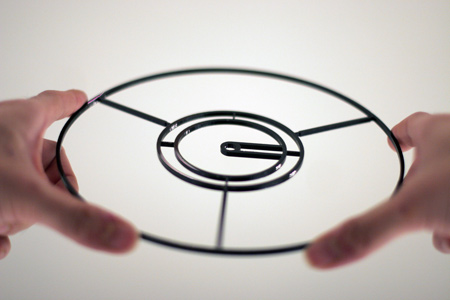
Here's some text from Suzuki:
--
In 1977, Nasa launched an unmanned scientific probe: the Voyager 1. This is now the farthest human-made object from Earth, and it continues to travel away from both the Earth and the Sun at a relatively faster speed than any other probe. The spacecraft contains a gold-plated, copper phonograph record, commonly known as the "Voyager golden record", which contains sounds and images that were selected to portray the diversity of life and culture on Earth — the sounds of earth.
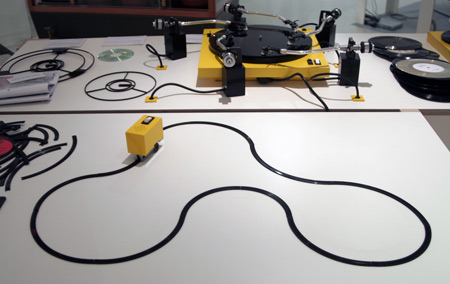
The record was placed on the Voyager 1 so that any intelligent extraterrestrial life form, or perhaps humans in the distant future, may one day find it and learn about Earth.
Why did NASA choose the record as the media for this important mission? In 1977, the record was the most common recordable media for sound — but is that the only reason? It has been 30 years since the golden record was made and its survival in space is particularly significant to me as my work is centred around the theme of "sound and physicality". Because of its physicality, the record has developed a new value and significance.
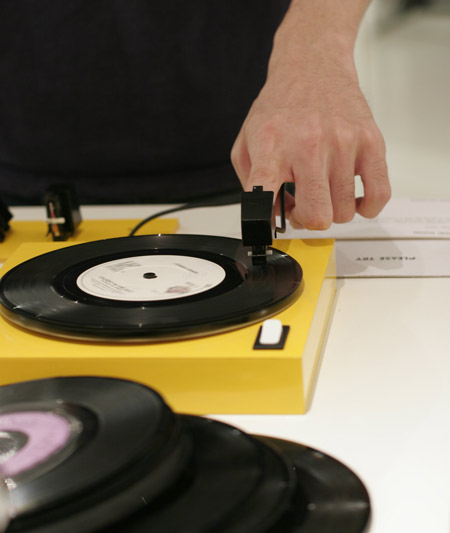
It could be said that the record is still the most modern, and the finest media in the field of analogue recording technology. The first gramophone recordings made over a hundred years ago have survived and can still be listened to today.
Technology has, however, "changed its track" from analogue to digital.
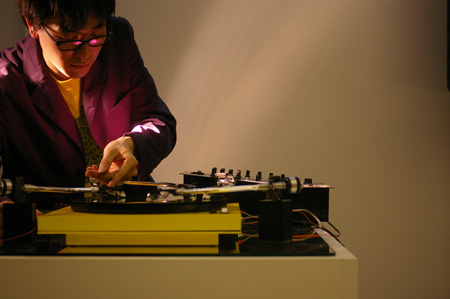
These days, most sounds are only digitally recorded. I personally feel uneasy about the digitisation of music and its reduction into "data". When objects lose physicality they become virtual, and I wonder if digitally-recorded music can survive generations in such a state. My hope is that my project will provoke people's interest in physical music media.
This series of works aims to help people re-appreciate sound and its physicality.